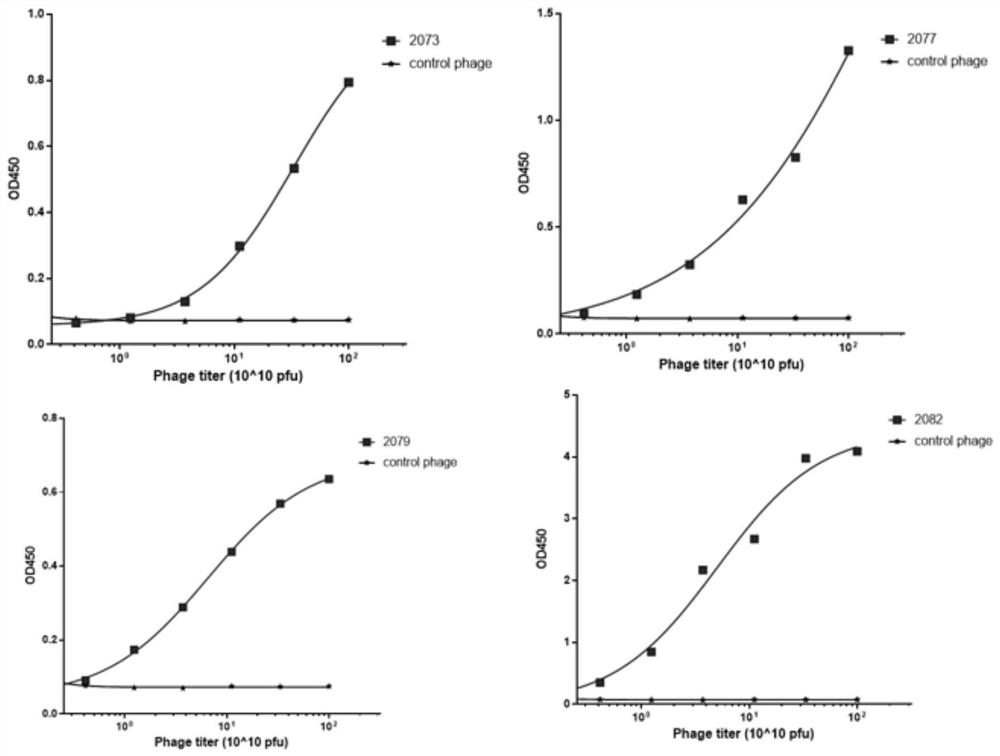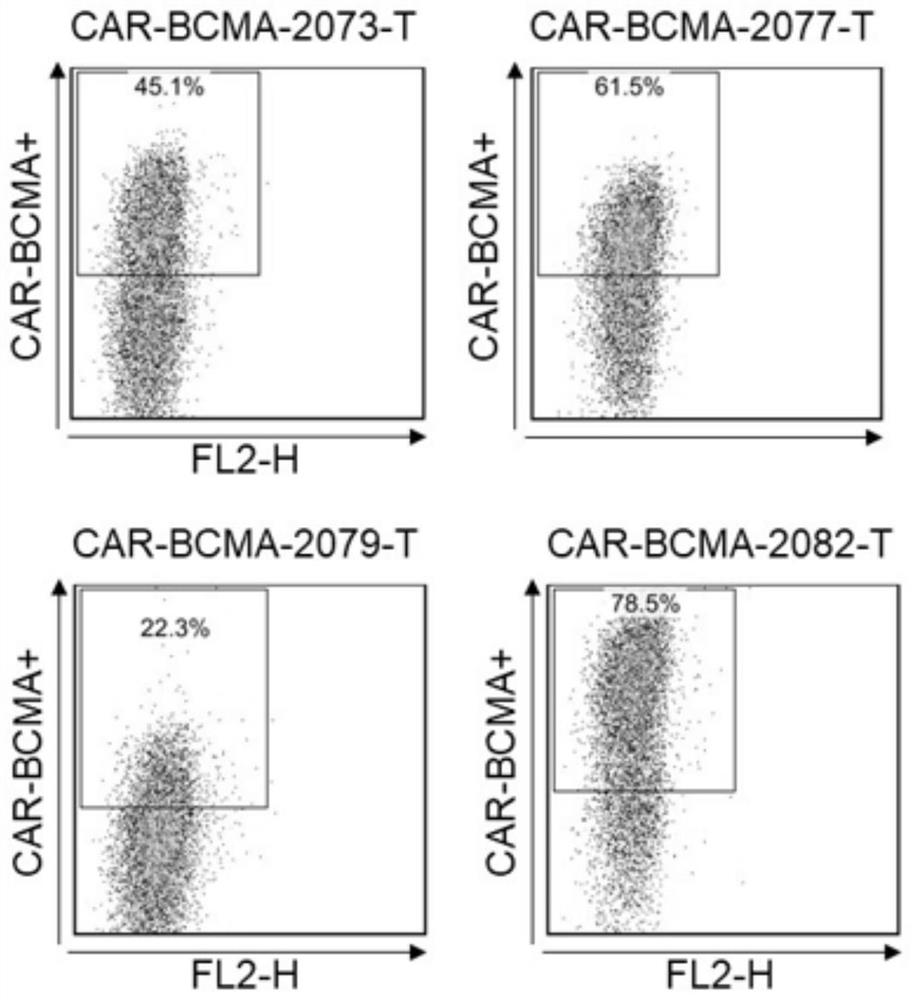bcma antibodies, chimeric antigen receptors and drugs
A chimeric antigen receptor and antibody technology, which can be used in antibody mimics/stents, drug combinations, anti-tumor drugs, etc., and can solve problems such as few antibody categories
- Summary
- Abstract
- Description
- Claims
- Application Information
AI Technical Summary
Problems solved by technology
Method used
Image
Examples
Embodiment 1
[0060] 1 Phage library panning
[0061] Biotinylated hBCMA protein was used as the panning antigen for the fully human antibody library. First, block the phage antibody at room temperature with blocking solution (PBST / 5% skimmed milk powder) for 2 h, and the input amount of phage is 2×10 12 Phage, then add 10μg antigen, incubate at room temperature for 1h, add 50μl pre-blocked M-280Streptavidin magnetic beads, incubated at room temperature for 30min.
[0062] First wash off the unbound phages with PBST, then elute the phages bound to the magnetic beads with 0.1M HCl-Glycine, then neutralize the eluate with Tris-HCl, and take part of the phages to infect the large intestine in the logarithmic growth phase Bacillus TG1, the collected phages were used for the next round of panning.
[0063] Gradually increase the screening intensity of each round, and stop panning when the enrichment degree reaches more than 100 times.
[0064] 2 Use phage Elisa to screen anti-BCMA single-ch...
Embodiment 2
[0093] Detect the binding force of the 4 BCMA antibodies obtained in Example 1, namely 2073, 2077, 2079 or 2082, to the hBCMA protein
[0094] Detection method:
[0095] (1) hBCMA protein coating, dilution from 1μg / ml, 3-fold serial dilution, a total of 8 gradients, the concentrations are 1μg / ml, 333ng / ml, 111ng / ml, 37ng / ml, 12.3ng / ml, 4.1 ng / ml, 1.37ng / ml, 0.45ng / ml, Costar-9018 microtiter plate was coated with 100μl hBCMA protein diluent, overnight at 4°C.
[0096] (2) After blocking with 3% BSA at room temperature for 2 hours, add the phage supernatant (10^10 pfu) corresponding to BCMA antibody 2073, 2077, 2079 or 2082, and incubate at room temperature for 2 hours.
[0097] (3) After washing away the unbound phage, add Ml3 Bacteriophage antibody (HRP), and incubate at 4°C for 1 hour. After washing, TMB chromogenic solution was added to develop color, and 2M HCl was used to terminate the reaction.
[0098] (4) Read at 450nm with a microplate reader, see the results figur...
Embodiment 3
[0101] Construction of chimeric antigen receptor expression vector
[0102] Build method:
[0103] (1) Whole gene synthesis: signal peptide (nucleotide sequence SEQ ID NO.66, amino acid sequence SEQ ID NO.73), BCMA antibody light chain variable region (light chain variable region of 2073, 2077, 2079 or 2082), Linker (nucleic acid sequence SEQ ID NO.67, amino acid sequence SEQ ID NO.74), BCMA antibody heavy chain variable region (heavy chain variable region of 2073, 2077, 2079 or 2082), hinge region (hinge) (nucleic acid sequence SEQ ID NO.74) ID NO.68, amino acid sequence SEQ ID NO.75), CD8α transmembrane domain (TM) (nucleic acid sequence SEQ ID NO.69, amino acid sequence SEQ ID NO.76), 4-1BB co-stimulatory signal transduction region (nucleic acid sequence SEQ ID NO.70, amino acid sequence SEQ ID NO.77) and CD3ζ signaling domain (nucleotide sequence SEQ ID NO.71, amino acid sequence SEQ ID NO.78). The above sequences are sequentially connected. Four kinds of chimeric antig...
PUM
 Login to View More
Login to View More Abstract
Description
Claims
Application Information
 Login to View More
Login to View More - R&D
- Intellectual Property
- Life Sciences
- Materials
- Tech Scout
- Unparalleled Data Quality
- Higher Quality Content
- 60% Fewer Hallucinations
Browse by: Latest US Patents, China's latest patents, Technical Efficacy Thesaurus, Application Domain, Technology Topic, Popular Technical Reports.
© 2025 PatSnap. All rights reserved.Legal|Privacy policy|Modern Slavery Act Transparency Statement|Sitemap|About US| Contact US: help@patsnap.com



